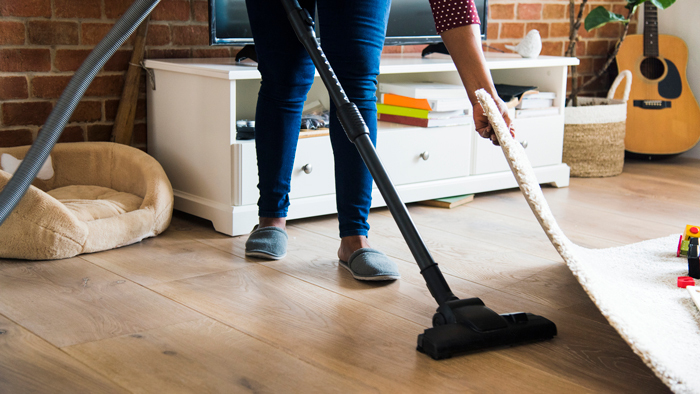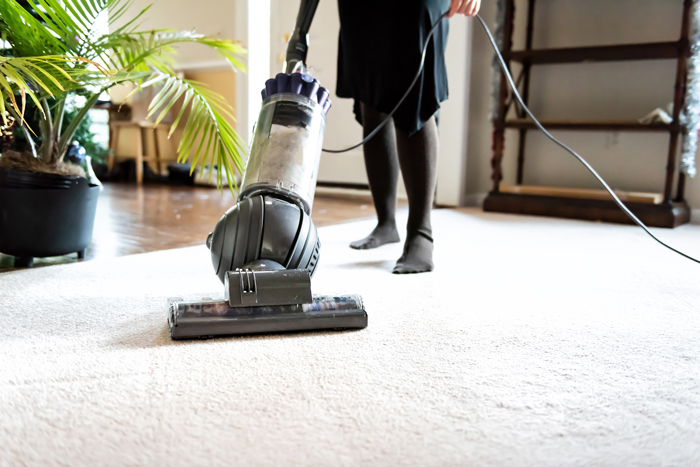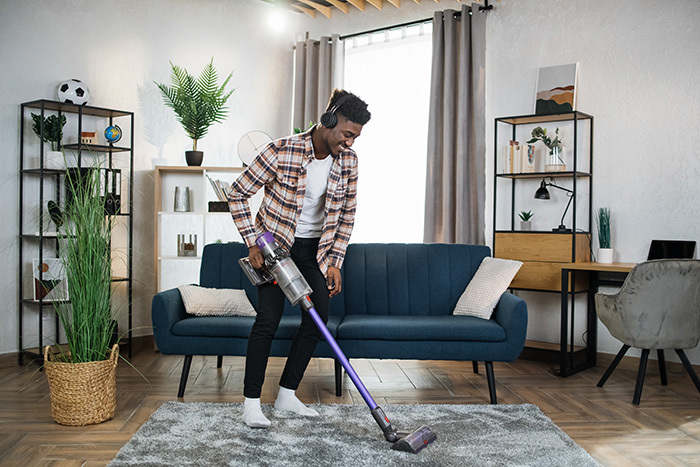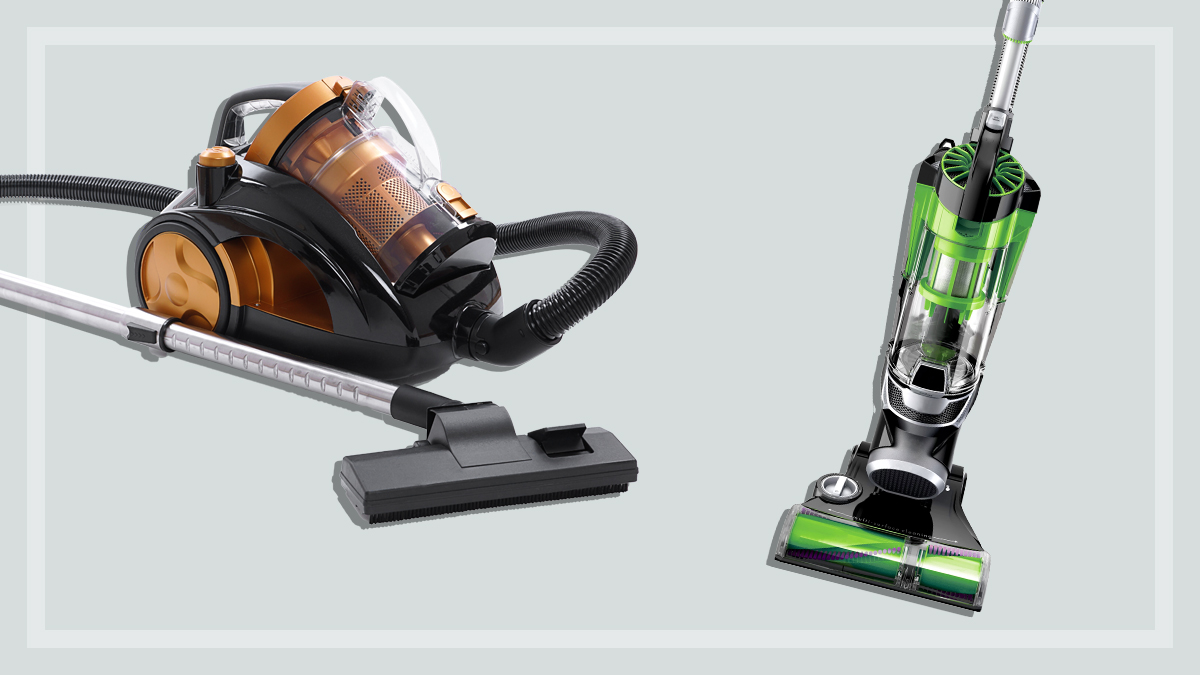Get our independent lab tests, expert reviews and honest advice.
Common vacuum cleaner problems and how to fix them

Vacuum cleaners always seem to break at the most inopportune times, don’t they? Like when the dog has destroyed a pillow in the loungeroom and your great-aunt Jemima is on the way over for morning tea.
On this page:
- Always read the manual
- Loss of suction
- Clogged filter
- Jammed cleaning head
- Stick vacuum cleaner batteries
- Warranties and your consumer rights
We can’t help you out with the unfortunate timing, but we can help you troubleshoot some common vacuum problems – which may get you out of the great-aunt Jemima pickle in time for scones and tea, and save you few a few bucks on having to buy a completely new vac either right away or down the track.
Our CHOICE vacuum experts talk us through how to DIY some problems and when to call in the professionals.
Always read the manual
Before you bust out the screwdriver or start pulling parts off your vacuum cleaner, always, ALWAYS, read the manual first. It will give you advice on how to access and replace the filters, tell you which parts you can wash, and other useful tips for maintaining and troubleshooting your vacuum.
And if you don’t read the manual you might end up doing something that makes the problem worse or voids your warranty – neither of which are good outcomes. So just cover yourself and read the manual, okay? It’s boring but it could save you a world of pain down the track.
The tips we’ll give you here are more general in nature; the manual for your machine will be able to give you more specific instructions.

Maintenance and cleaning
First things first: if you look after your vacuum, it’ll look after you. Regular maintenance and cleaning will help your vacuum cleaner perform at its best and help to minimise problems. It’ll also extend the life of your vacuum, which will save you money in the long run.
Read CHOICE vacuum expert Chris Barnes‘ article on how to clean your vacuum cleaner for useful tips on keeping your vacuum well maintained.
Things to try before calling a repair person
You know how IT professionals always tell you to turn your computer off and on again? Well, there are similar tricks for troubleshooting vacuum cleaner problems.
Before you do anything else, check for blockages in the hose, check if the bag or bin needs to be emptied, and take a look at the filters to see if they need cleaning.
Loss of suction
Loss of suction could be caused by an obstruction in the hose. If you think there’s a blockage in the hose, disconnect it from the vacuum head and body and give it a good shake to see if anything falls out or rattles.
Check each end of the hose to see if there are any blockages visible and, if there aren’t, gently push a broom handle through the hose to locate any blockages and push them out.
If your vacuum is consistently getting clogged, try pulling all the detachable cleaning parts off the cleaning head, attachments, hose and wand – and giving them a soak and wash.
“I recently did this with my vacuum and was surprised at how much caked-on dirt and dust there was from years of never cleaning it,” says expert vacuum tester Adrian Lini.
“It made the vacuum feel and look a lot newer and also lowered the noise level while using it.”

Clogged filter
You should be cleaning your vacuum’s filters regularly to help your machine run smoothly. If you haven’t done it before, refer to your manual for the first clean, and then set a reminder in your phone to clean the filter once a month or so.
Pull out the filters and brush them off, then give them a wash to get rid of all the dust. Let them dry fully before you put them back in the machine.
The only exception to this is for HEPA filters, which usually can’t be washed. Check the manual for details on your filter.
If it’s been a while since you bought your vacuum, you might need to replace the filter. You can usually buy them directly from the manufacturer or from vacuum retailers.
Jammed cleaning head
After hours of sucking up hair and lint off your floor, it’s no wonder that your vacuum head might get a little tangled.
If the floor head has a brush roller, you can usually remove it for cleaning. (Just check the instructions first so you don’t break anything.)
Remove any tangled hair or threads by cutting them with scissors, a thread ripper or small knife.
While you’re at it, clean the roller head and bristles, either by using a small brush, the vacuum hose, or by washing it under a tap. (Check that it’s dry before you re-install it.)
“The roller brush in the cleaning head is sometimes driven by a rubber belt, which can wear out, break, or slip off the roller drive wheels,” says CHOICE household expert Chris Barnes.
“Putting it back in place or replacing it is usually an easy enough DIY job.
“However, many of these brush rollers are now driven directly by a rotating spindle so this task might not be relevant for many current models.”

Stick vacuum cleaner batteries
The most common problems that Australian consumers have with stick vacuums is short battery life and the vacuum not picking up dirt.
“If your stick vacuum seems to be losing charge quickly or has low power, it could be worth purchasing a new battery,” says Adrian.
“Li-ion batteries slowly lose their charging capacity over time and this can really reduce the practicality and use of your stick vacuum.”
You can expect a battery life of around three to four years and, unless you have a very basic model, you should be able to take the battery out yourself.
Battery replacement usually costs around $100, which could be worth it for a high-end stick vac, but might not be financially viable for cheaper models.
“Some older Dyson stick vacs that don’t have swappable batteries can be taken apart with a screwdriver,” says CHOICE household expert Kim Gilmour.
Kim suggests this step-by-step guide to removing and replacing the battery in a Dyson V8 stick vacuum.
“Some batteries may be replaceable but I’d be wary of recommending third-party batteries,” says Kim.
Warranties and your consumer rights
Before you start fiddling with your vacuum, check the warranty. If you take a screwdriver to a vacuum that’s still under warranty, you could void it and find that you’re on your own if something goes awry.
If your machine is relatively new, then it should be covered by the manufacturer’s warranty, or should be covered under the Australian Consumer Law (ACL). In these cases, the manufacturer is probably responsible for repairing, replacing or refunding you for the faulty vacuum.
If you take a screwdriver to a vacuum that’s still under warranty, you could void it
Products should function well for a reasonable amount of time after purchase, and if they don’t then you’re entitled to a repair, replacement or refund. But what constitutes a ‘reasonable amount of time’ is a matter of opinion and some manufacturers will try to worm out of it.
Check our article on appliance life expectancy to see if you have a case for invoking the ACL in your discussions with the manufacturer.
If all else fails, call a professional
There are some things that you just can’t fix yourself, no matter how much you fancy yourself as a modern-day MacGyver. But you do need to weigh up whether it’s worth the expense.
“Professional repair is needed for more complex problems such as a faulty motor,” says Chris.
“Unfortunately, for cheap models, repair is probably more costly than just getting a new one (unless it’s still in warranty, of course).
“But a good vacuum cleaner should last several years and repairs can be worthwhile for a more expensive model.”
We estimate that a vacuum cleaner should last for four to 10 years, depending on the upfront cost.
A vacuum cleaner should last four to 10 years, depending on the upfront cost
For a budget machine, you can expect it to last around four years. For a mid-range model, it’s about six years, and a high-end vacuum should last you around 10 years.
Of course, there’s more to repair and replacement costs than just the financial side of things – ideally, we’d all consider the environmental impact, too. Repairing a product means one less appliance going into landfill.
But you do need to consider the quality of your vacuum cleaner. Is it worth repairing a cheap machine if it’s likely to be at the end of its useful life anyway? You might get an extra six months’ use from it, but is that worth the cost to your pocket?
This is where buying the best quality you can afford can really pay off – it’s likely to last longer and be built well enough that it can be given a new lease on life when things wear out.






